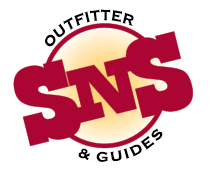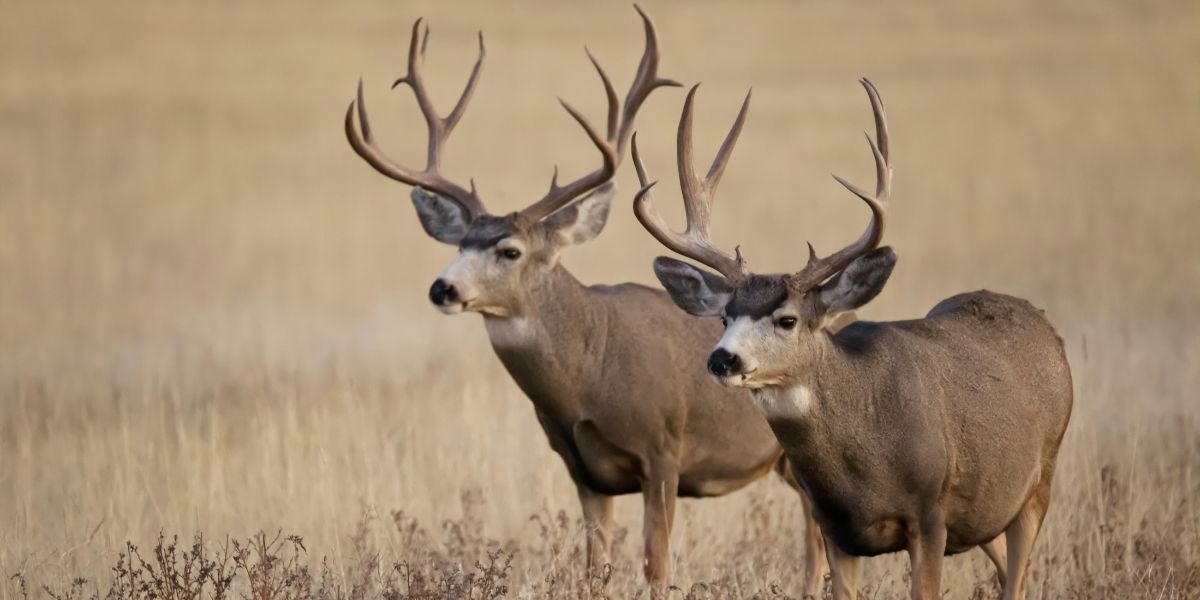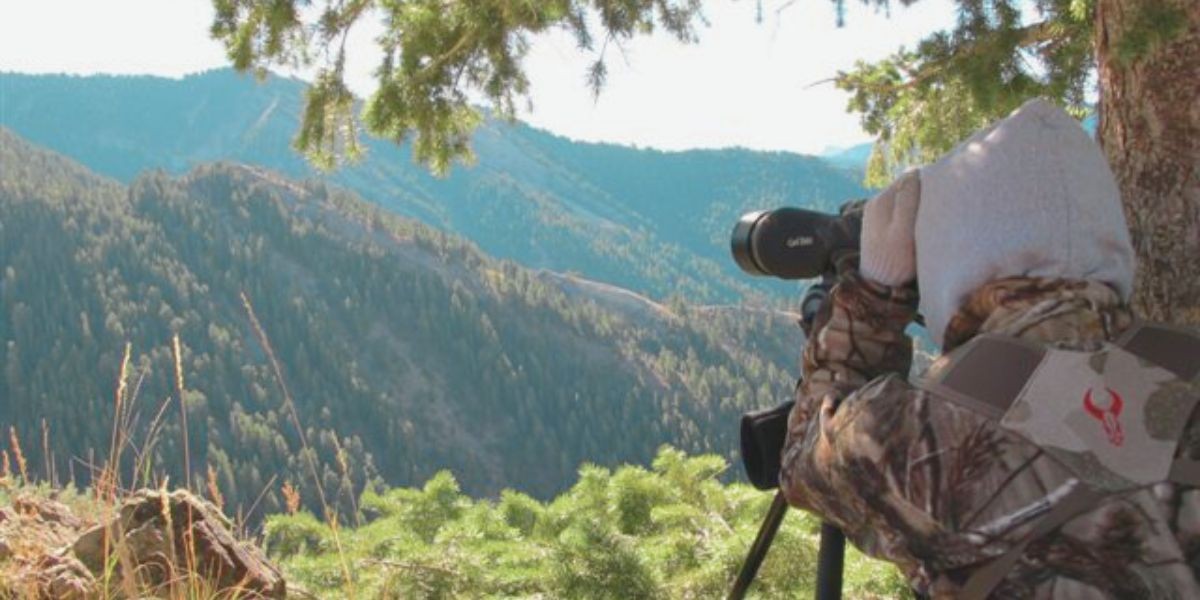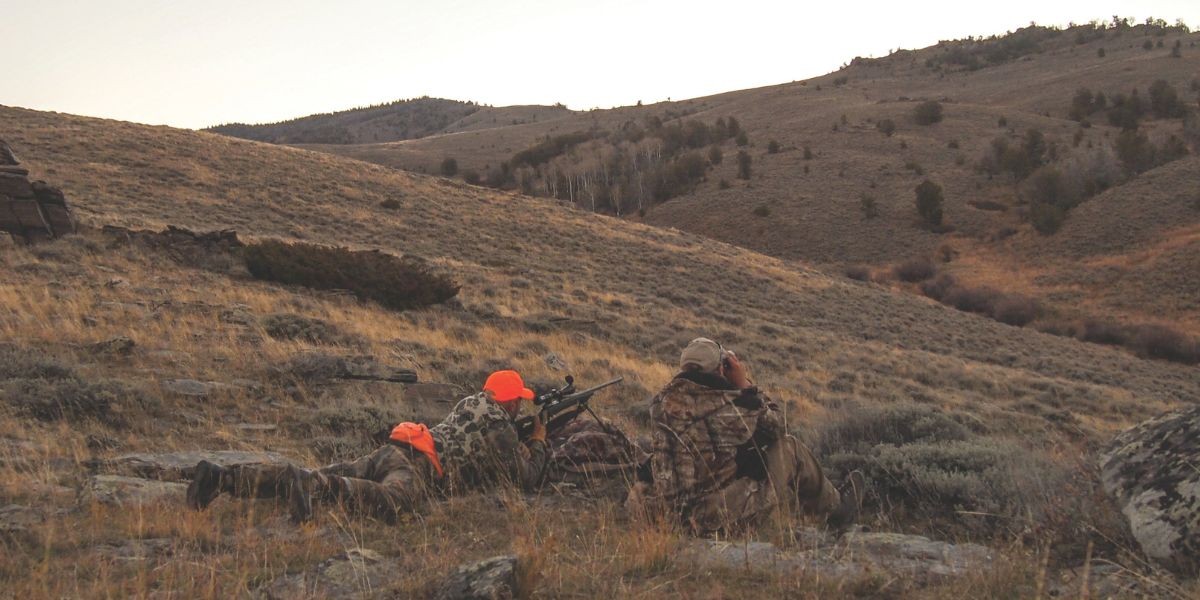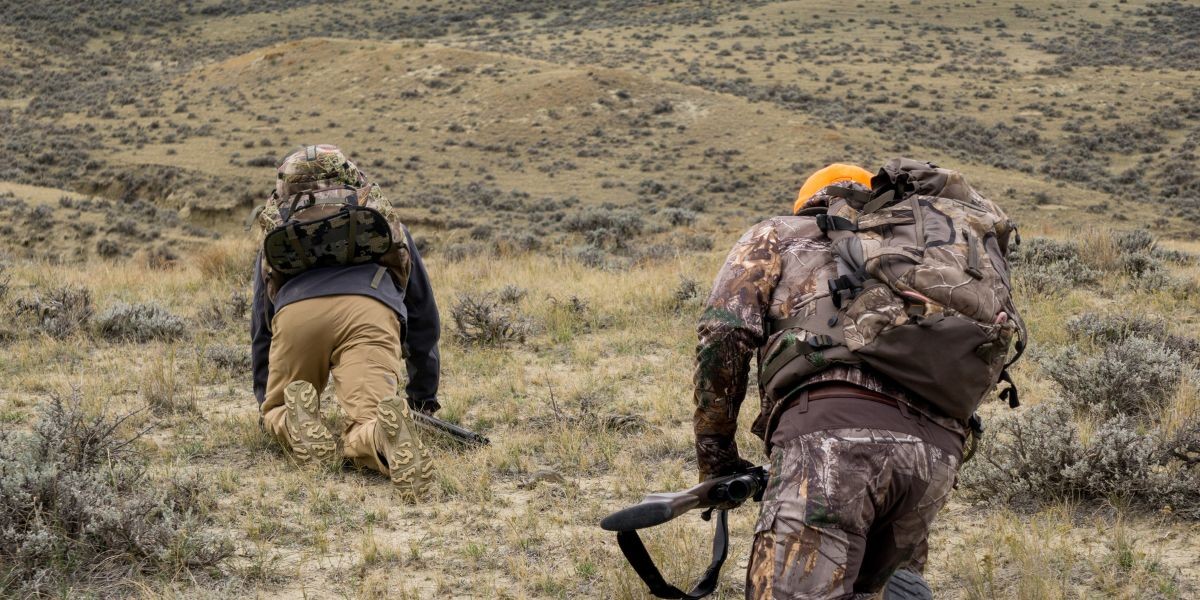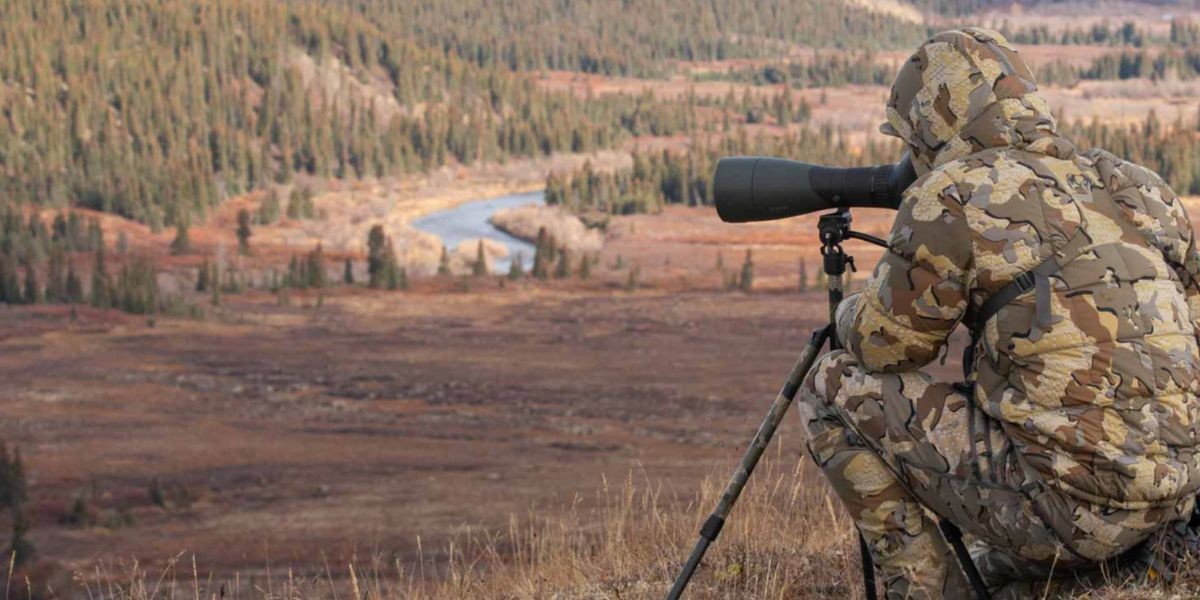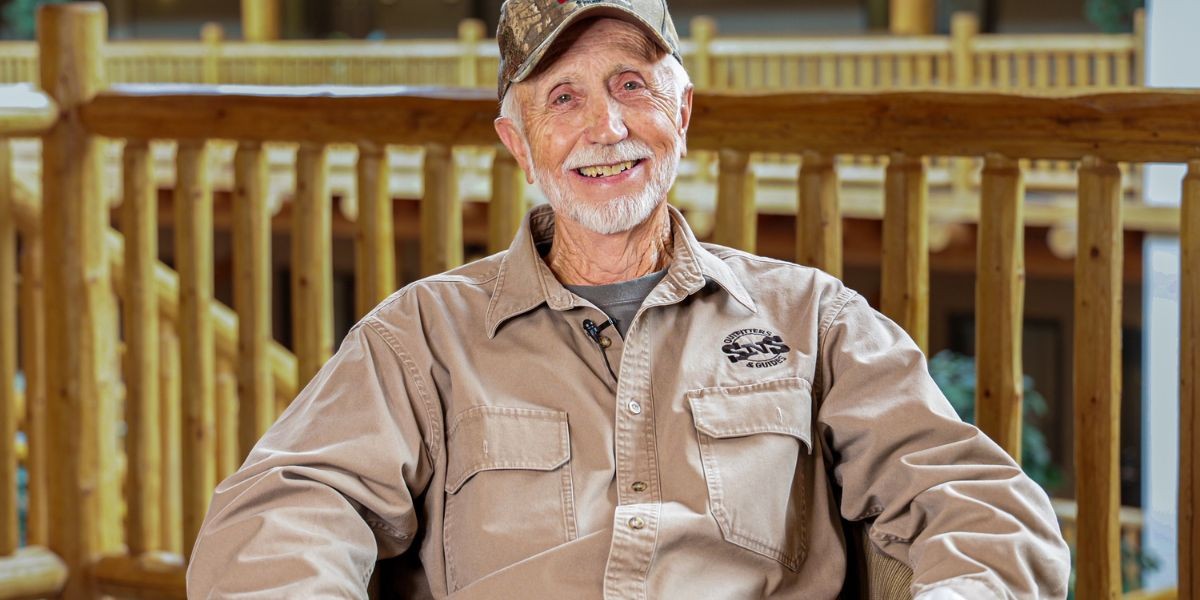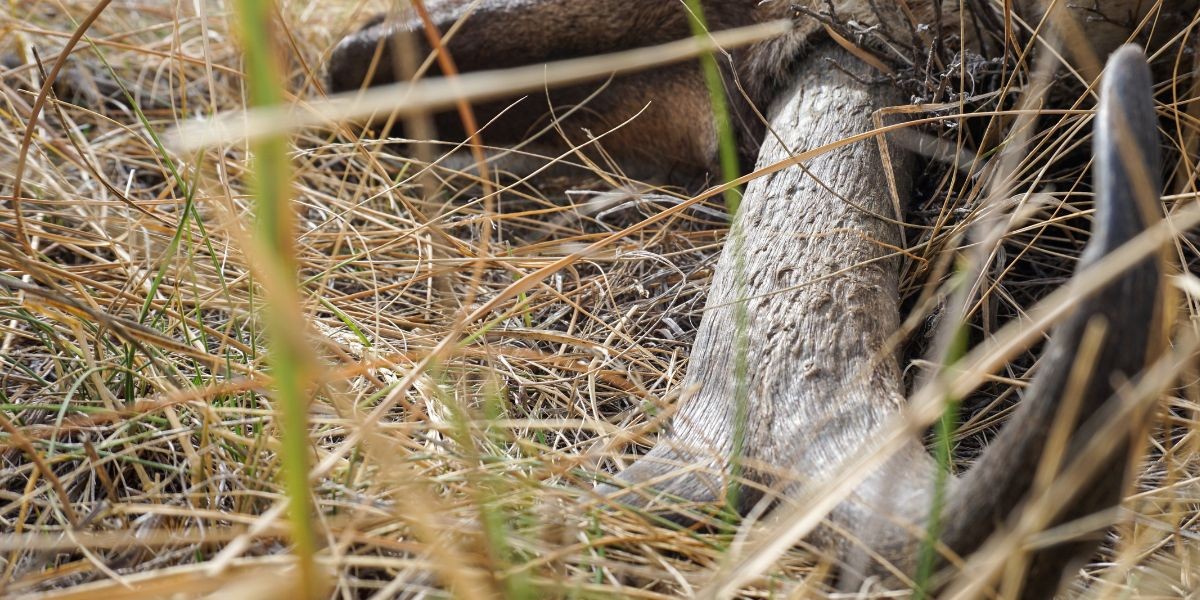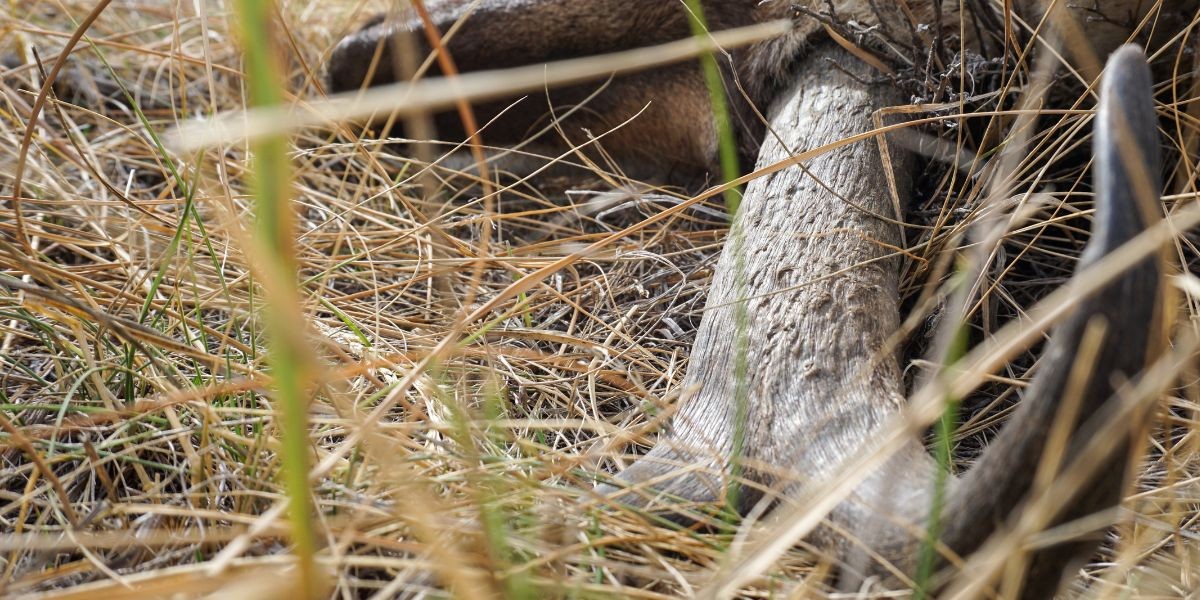One of the most exciting things about hunting in Wyoming is the widely varying range of opportunities. From the plains to the peaks, this is a state that offers everything. Some of our favorite hunts each year are the mule deer and antelope Combo hunts.
These combo hunts offer everything you could want in a classic, western hunt. There’s nothing like being able to spot and stalk trophy Wyoming mule deer and then go after North America’s fastest animal and one of its most beautiful, the pronghorn antelope.
We conduct these mule deer and antelope combo hunts on nearly 200,000 private acres of incredible big game habitat. This is a unique opportunity to pursue two iconic western trophies.
These hunts take place from early October to late October, depending on the location. The terrain on these ranches varies from plains to rolling hills, to steep canyons, and pine-covered foothills. Perhaps the only things better than pursuing these great big game animals is the incredible Wyoming scenery and the fun hunting camp experience.
We offer three different camps for these combo hunts. On our website or in our brochure, you can refer to Hunt 2, Hunt 5 or Hunt 10 for details. Whether you prefer to hunt from camp or from town, we can help plan a hunt that’s perfect for you or your group. For more information, give us a call at 307-266-4229.
We hope to see you here at SNS Outfitter and Guides soon on this incredible western combo hunt!
We’ve received a great deal of questions recently about a giant crack in the earth that recently appeared on a ranch where we operate in the southern foothills of the Bighorn Mountains. Thinking it was interesting, but not knowing that it would get so much attention, we posted a photo on our Facebook page. After being shared more than 7,000 times, we started receiving a flood of questions and comments.
Here’s what we know so far: we have two outfitted camps on this ranch. We hunt here every year and have been doing so for decades. Our guides first noticed the giant fissure in early October. We couldn’t tell what had caused so much earth to suddenly move, but it certainly had not been there long.
A couple of weeks later, an engineer from Riverton, WY joined us to take a closer look. We walked the perimeter and took estimates on size using a rangefinder. We estimated the crevasse to be about 750 yards long and about 50 yards wide.
According to the engineer, there was a cap rock being lubricated by a spring. Additionally there was a spring running across east to west, which then caused the entire thing to slide north. The engineer estimated about 15 to 20 million yards of movement. According to the USGS, there has been no seismic activity, so we have no other possible explanations at this time.
Since posting the photo on Facebook, we’ve received countless offers from geologists, scientists and reporters from all over the world to come and take a look at this fascinating event. It truly is incredible to look at, a canyon that formed almost overnight – a mountainside that seems to have suddenly collapsed.
As we speak with experts and learn more about it, we will share updates here and on our Facebook page.
SNS Outfitter and Guides is Wyoming’s top outfitter and the largest pronghorn antelope outfitter in North America. With more than 700,000 acres of private land and prime wildlife habitat, we offer more hunting opportunities that anyone else in the state. If you’d like to find out more about our hunts, please visit our website at HuntWyo.com. For availability and specifics, please contact us online to request a free brochure.
Having the right gear can make or break your Wyoming hunt, and this is especially true of your boots. Boots could possibly be your most important investment after your firearm or bow. You will wear them every day in the field, and they must perform well. If you are cold, wet, or get blisters on your feet, it’s not going to be a fun experience. You may not be able to spend the necessary time in the field, and you may not be able to hike to the locations necessary to get a shot opportunity. This would obviously be a huge disappointment.
General Considerations for Boots
When considering boots for a big game hunt, there are a few common features that hunters should always look for. First, a quality boot should have a waterproof membrane like Gore-Tex. It should also have an aggressive outsole like Vibram. And a quality boot should be relatively lightweight. Ideally, a pair of boots should weigh no more than 5 lbs. In many cases, particularly for the early seasons, there are many boots that weigh much less.
The height of the boot is also a key consideration. In general, we recommend a boot that’s no less that seven or eight inches. This will give you the necessary ankle support for walking in rough country. Height also provides protection when traveling through snow or crossing streams. But we also recommend that hunters also pack a pair of gaiters for those situations. Gaiters keep water or snow from getting into your boots and will keep the bottom of your pants dry.
Perhaps the most important consideration for boots is the fit. Each brand fits slightly differently and some may be wider or narrower than others. Therefore, it is important to try on a few different brands of boots before purchasing. After you make a purchase, it is equally important that you put some miles on them before your hunt. You must be confident that your boots fit well and will keep you blister free.
If you purchase a quality pair of boots that fit your feet correctly, they should perform well right out of the box with no break-in period and no blisters. The reason that we recommend putting some miles in your boots before your hunt is to be sure that they fit you well and won’t cause problems in the field.
Boots For Archery and Early Seasons
Let’s now take a closer look at selecting boots for the early season. September in Wyoming brings big temperature swings. Mornings may be in the 20s or low 30s and midday temperatures may approach the 60s or warmer.
Therefore, insulated boots are not a requirement. We like to steer clients to a lightweight boot that’s 2.5 to 3.5 lbs.
A minimum height of seven to eight inches is recommended. Remember, with today’s technology in materials, lightweight doesn’t mean you need to sacrifice support. There are many good choices that provide excellent support in a lightweight package and they don’t have to be hunting specific. General hiking boots can make a great choice for an archery hunt.
Boots For the Late Seasons
During the October hunts, big temperature swings may occur with chilly mornings as low as the high teens. By midday it can be as warm as the low 50s. As we get into late October, the weather can turn to winter conditions quickly with lows in the single digits and sometimes below zero.
Snow can be a real possibility throughout the entire season, but especially late in October. Needless to say, insulation is a core requirement. We recommend a boot with about 400 grams of insulation. When snow is on the ground, an insulated rubber bottom pac boot like those made by Schnee’s or Kenetrek are hard to beat.
Ideally, we recommend that hunters bring two pairs of boots to camp. First, a good pair of insulated Gore-Tex, hiking style hunting boots that are a minimum of nine inches, and a second pair of boots like pac boots as a backup or for very cold and wet weather.
It’s easy to make the case that after your weapon, a couple pair of good boots is the highest priority for your Wyoming hunting trip in terms of gear. If your feet aren’t warm, dry and comfortable, it will be difficult to enjoy yourself in the field. Trade-offs can be made with lower quality gear in many areas of clothing. But boots and good quality rain gear is where you want to buy the best you can afford.
When chatting with first-time clients and hunters from across the country, we’re often asked what can be expected on a hunt with SNS. What is a typical day like on a Wyoming hunt with us?
Here’s a short photo tour, showing a day in the life at a typical SNS hunting camp.
1. Up Before Dawn
At all of our camps across Wyoming, whether you’re hunting elk in the mountains or antelope further east, we’re always up well before daylight. Hunters can expect a home-cooked, hot breakfast before departing on horseback, on foot or by vehicle.
On our horseback hunts, guides will have your animals saddled and ready to go by the time you finish breakfast.
2. The Hunt Begins
The distance from camp to the hunting area varies greatly, depending on the area and your Guide’s plans for the day. Horseback or vehicle rides of an hour or more are not uncommon. In other cases, hunting may begin right outside your door.
On many hunts, the day often begins behind the binoculars or spotting scope. As soon as it’s light enough to see, we begin glassing. Spotting those first animals of the day is always an exciting moment.
3. Long Days in the Field
We typically pack lunches to bring into the field to maximize hunting time. Without having to return to camp during midday, we will continue hunting through the afternoon. How we hunt the day will largely depend on the game and the weather.
4. When Game is Down
If you have an opportunity to harvest an animal, your guide will take photos and field dress the animal. If we’re hunting by vehicle, your animal will be loaded up for the trip back to camp. When hunting by horseback, your guide will quarter the animal and load it on to a packhorse for the return to camp.
5. A Hot Meal and Warm Bed Awaits
Upon your return to camp each day, a home-cooked dinner will be waiting. Your guide will unsaddle horses or get gear organized while you have a chance to get cleaned up. Then hunters and guides gather around tables to share their stories from the day.
After dinner, hunters are welcome to stick around and swap stories, but most will filter off to bed and prepare for another day of the hunt.
This is our third post in a series on mule deer hunting tips. In the first article, we shared our keys to glassing on a mule deer hunt, and in the second article, we offered a few tips on where to locate mule deer. In this post, we'd like to share with you some of our tips on stalking mule deer.
As we mentioned in the previous posts, we have seen a steady increase in the popularity of mule deer hunting over the last several years. Wyoming is one of the best places on earth to chase these magnificent animals and we continually receive questions about mule deer hunting opportunities. Their size, the challenge, and the spectacular country that they inhabit all combine to make for an unforgettable big game hunting experience.
After more than 30 years of hunting mule deer in Wyoming, we have see our share of successes and mistakes along the way. Mule deer are notoriously difficult to get close to. Stalking these animals requires a great deal of patience and care. Here are our top 5 tips for stalking mule deer:
- Avoid unnatural noises.
- Don’t skyline yourself.
- Pay attention to the wind.
- Be patient when you don’t have an approach.
- Don’t bump the does.
For more information on Wyoming mule deer hunts with SNS Outfitter & Guides, please visit our Mule Deer Hunting Page. For information on hunts for pronghorn antelope, elk, black bear, whitetail deer and other opportunities in Wyoming and Montana, be sure to visit our Home Page. You may also request a free color brochure or call us anytime with questions at 307-266-4229.
Thanks to the Wyoming Hunter Defense Fund and those who have donated to this important cause, a victory was won last month that saved Wyoming nonresident hunting license allocations.
Senate Bill SF0069 would have cut nonresident license allocations for moose, bighorn sheep, mountain goat and grizzly to just 10%. This would have cut the number of nonresident moose tags in half and reduced nonresident bighorn sheep and mounting goat hunting opportunities by 60%.
Fortunately the Wyoming Hunter Defense Fund was able to lobby during the 2015 general legislative session. With help from the Wyoming Office of Tourism and other concerned businesses and individuals around the state, the bill was soundly defeated.
Despite the fact that hunting tourism represents hundreds of millions of dollars in economic impact and provides the majority of funding for our wildlife and hunting opportunities, bills like this have become all too common recently. If you are a Wyoming business owner, resident hunter, nonresident hunter or anyone who values the benefits of hunting tourism in Wyoming, we encourage you to donate to the Wyoming Hunter Defense fund.
We are already battling similar bills and the fight certainly is not over. A recent House Bill (HB112) sought to implement a 90/10 license allocation on all big game hunting licenses in Wyoming. This would have cut the number of nonresident hunters in Wyoming by half. That would equate to a loss of $100 million in tourism revenue, $7 million in lost license revenue for the Game and Fish Department, 250,000 acres in land access, and hundreds of thousands of dollars in Conservation Stamp funding.
The Wyoming Hunter Defense fund has been working hard to communicate this message to business owners, residents and nonresident hunters. Wyoming nonresident hunting license sales are a critical part of our state's economy and are in large part responsible for the great hunting opportunities that we enjoy today.
For more information, please visit wyominghunterdefensefund.com.
This is the second installment in our mule deer hunting series, and today we’re diving into one of the biggest questions our guides get each season:
“Where do I even start when looking for mule deer?”
Whether you’re high above timberline or hunting the sagebrush flats, knowing where to look is critical. And in a place like Wyoming—where mule deer country is vast and varied—a solid strategy can make all the difference.
There’s no doubt that interest in western mule deer hunting has grown steadily over the past decade. From the high plains to alpine basins above timberline, mule deer continue to capture the imagination of big game hunters across North America.
At SNS Outfitter & Guides, we’ve seen this trend firsthand. With Wyoming offering some of the best and most accessible mule deer hunting in the West—from the rugged peaks of the Greys River to the open prairies—we’ve guided hunters through nearly every terrain mule deer call home.
Update on the Wyoming Hunter Defense Fund (WHDF)
A few months ago, we shared the launch of the Wyoming Hunter Defense Fund (WHDF)—a vital initiative created to protect hunting access, educate the public, and conserve wildlife habitat throughout the state. Since then, this grassroots effort has gained strong momentum thanks to the generosity of SNS Outfitter & Guides clients and other dedicated hunters.
The Wyoming Hunter Defense Fund: Protecting the Future of Hunting in Wyoming
In Wyoming, non-resident hunters play a vital role in supporting the state’s wildlife and hunting heritage. From helping meet harvest quotas to providing millions in tourism dollars and covering a major portion of the Wyoming Game & Fish Department’s budget, these hunters are essential to conservation and game management in the Cowboy State.
But until recently, sportsmen didn’t have a strong voice in the legislative process. That’s why the Wyoming Hunter Defense Fund (WHDF) was created.
When it comes to North American big game, few species are as iconic—or as challenging—as the mule deer. With bucks tipping the scales near 300 pounds and antlers pushing over 200 inches, these animals are the dream of many western hunters.
Mule deer are incredibly adaptable. From high alpine basins to sagebrush prairies, they thrive in a wide range of habitats. Here in Wyoming and Montana, our guided mule deer hunts span the open plains east of the Rockies to the steep terrain of the Greys River. No matter the location, one thing remains the same: success requires patience, preparation, and sharp glass.
The American pronghorn antelope is one of the most challenging animals to hunt in North America. Known for its exceptional vision and speed, the antelope is incredibly skittish and thrives in wide-open terrain. Getting close enough for a shot—especially on a trophy-class buck—takes patience, strategy, and skill.
We sat down with several of our seasoned SNS guides to get their #1 tips for successful antelope hunting in Wyoming. Whether you're chasing your first pronghorn or returning for a record buck, these insights can make a big difference in your hunt.
We receive a great deal of questions each year about the proper clothing to bring on a Wyoming hunt. While the elevation and terrain may vary drastically from our high country mule deer and elk hunts, to our open country antelope hunts, one thing remains true: on these high prairies and rocky mountain slopes, conditions can change in the blink of an eye. Hunters must be prepared for a wide range of conditions from hot and dry to freezing cold and wet.
With such a wide range of autumn weather possibilities here in the Rockies, how should hunters prepare? The key is dressing in layers that allow the hunter to adapt to daily changes in the weather. For example, instead of bringing one heavy winter jacket, we recommend bringing lightly insulated items that can be mixed and matched.
Another Wyoming hunting season has passed, and we want to thank all of our hunters for a fantastic year of elk, mule deer, and antelope hunting! As we finish organizing gear and closing up camps for the winter, we thought we’d share some helpful tips to ensure your hunting equipment stays in top condition and is ready to go next season.
Don’t put your gear away without giving it a little attention—mud, dust, and moisture can cause corrosion, wear, or damage during the off-season. With a few simple steps, you can keep your gear performing its best for years to come.
Benny Tillerson is a perfect example of the skilled and dedicated guides that make SNS Outfitters & Guides one of Wyoming’s most trusted names in big game hunting. With nearly 25 years of guiding experience and more than four decades of hunting antelope and mule deer in the West, Benny now serves as a camp manager, specializing in mule deer and pronghorn antelope hunts.
We recently sat down with Benny to learn more about his background, favorite aspects of guiding, and his top advice for hunters coming to Wyoming. Here's what he had to say:
The Wyoming Game and Fish Commission (WGFC) has released new hunting regulations, now in effect. These updates expand the list of legal calibers and ammunition, clarify requirements for archery equipment, and officially legalize the .17 HMR rimfire cartridge for turkey hunting.
These changes aim to simplify regulations while maintaining Wyoming’s commitment to ethical and effective wildlife management.
Physical Conditioning for Your Wyoming Antelope Hunt
When it comes to preparing for a Wyoming pronghorn antelope hunt—or any western big game adventure—our guides emphasize two key areas: shooting practice and physical conditioning. In Part 1 of our series, we covered shooting tips. Now, we’ll share our top recommendations to help you get in shape and maximize your experience in the field.
Why Fitness Matters for Antelope Hunting
Antelope hunting in Wyoming often means covering vast, open country with rolling hills, sagebrush flats, and uneven terrain. You might spot a buck from a mile away—but getting into shooting range requires speed, agility, and endurance.
Why Shooting Practice Matters Before Your Antelope Hunt
For many hunters, a Wyoming pronghorn antelope hunt or any western big game adventure represents a major investment—and often, the opportunity of a lifetime. In this three-part series, we’ll break down the essential steps for preparing for a successful hunt.
Part 1 focuses on one of the most critical elements of hunting success: shooting practice.
Want more?
See past blog posts on the SNS Blog.
SNS Outfitter & Guides is a permittee of the Bridger Teton National Forest, Greys River District & Thunder Basin National Grasslands as well as the Bureau of Land Management.
Outfitter Web Site Design by Waves Web Design.
